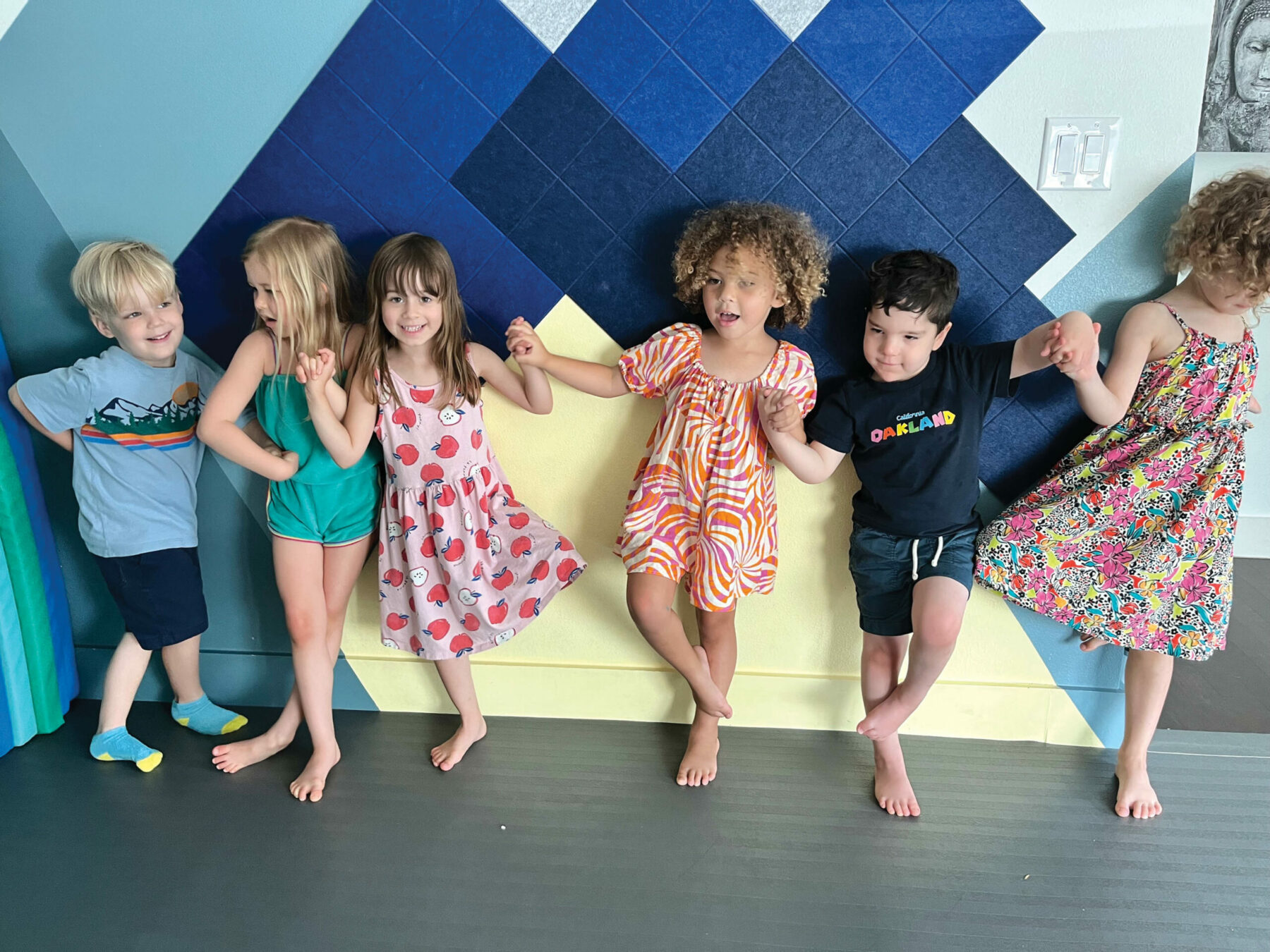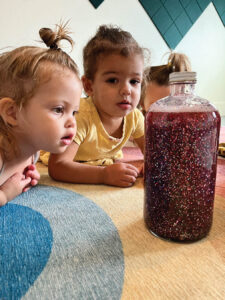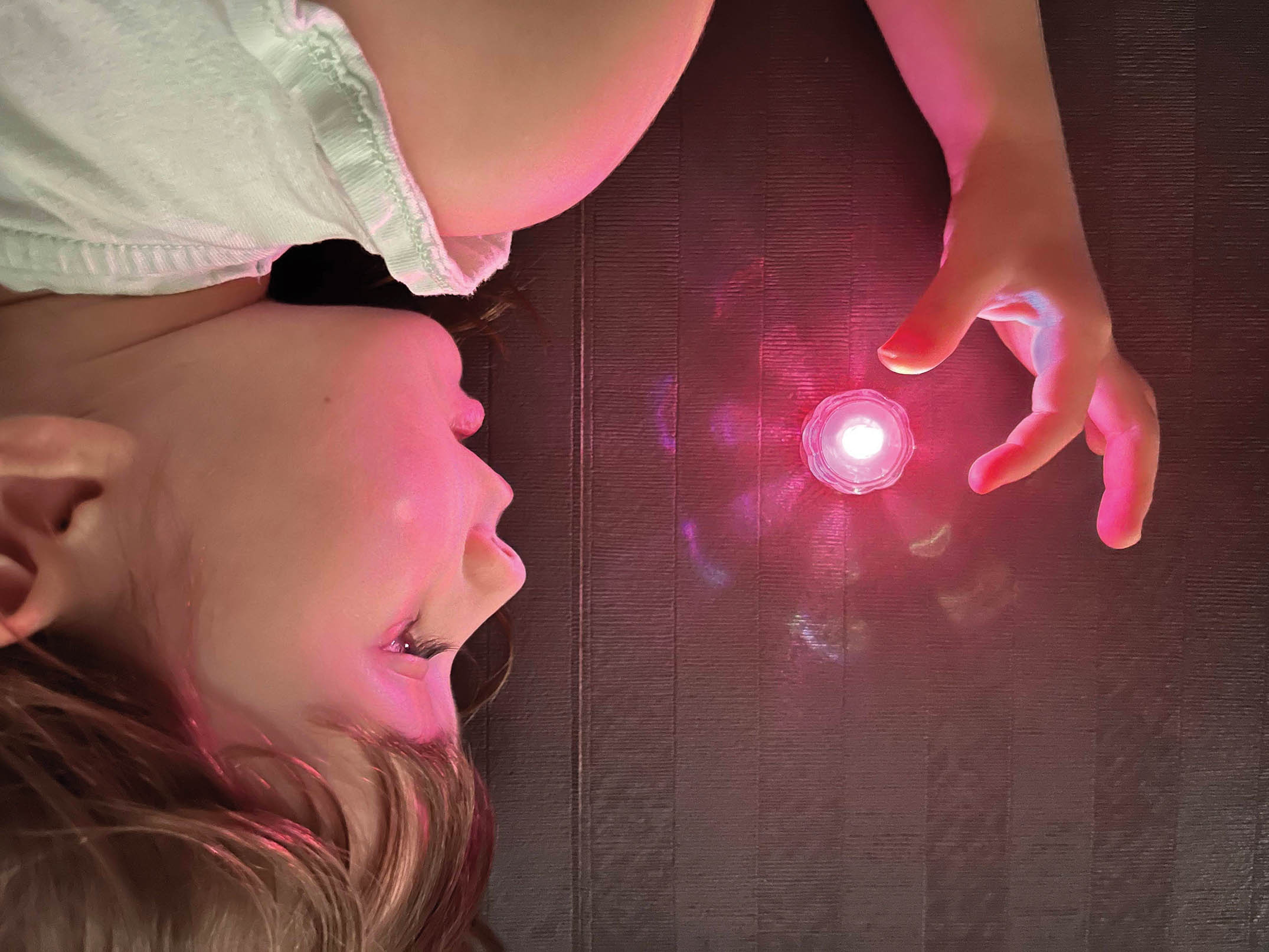Little Yogis Bring Peace to Austin Through Yoga Peace School

An Dang was enthused to hear that her daughter’s teachers noticed her heightened emotional intelligence and how it compared to other students. The reason being? Yoga.
Aside from the physical benefits of developing motor skills, spatial awareness and mindfulness tactics, yoga can also enable children to identify and develop emotions through understanding empathy, compassion and kindness.

For Dang, the founder and owner of Yoga Peace School in Brentwood, yoga is a lifestyle. She began the practice in 1996. Seven years later, she graduated from the University of Texas with a degree in architectural interior design, but she always loved working with children.
When her daughter was in kindergarten, Dang was unable to find a preschool that had everything she wanted. So she incorporated her design, travel and yoga experiences to create Yoga Peace School.
“This was all trial and error,” Dang says. “I was a single mom. I loved to work with kids. I was a yogi, and I was like, ‘I’m just gonna bring all this together and see how it goes.’”
Dang opened the preschool in 2012 and has been changing little lives ever since. She uses her personal teaching guide, coined the Peaceful Approach to Learning™, or PAL method, to encourage her students — children ages 1 to 5 — to find and radiate peace.
“(The PAL method) is all about finding inner peace within ourselves through social and emotional exploration,” Dang says. “Once we find peace within, we are better equipped to communicate with others peacefully.”
The founder shares that part of the PAL method is the exploration of mindful communication using the five senses. She says being aware of your surroundings helps enhance the experience.
The children practice mindfulness techniques like breathwork using toys and other tools (i.e. feathers, pinwheels, expandable balls), play-centered yoga, and coloring and bubble timers to teach concentration and explore feelings. They also enjoy participating in a human mandala flow, in which they form a circle and create a moving mandala through yoga poses.
Cara Sheridan, a lead “peacekeeper” at Yoga Peace School, says research shows that breathwork and body movements help regulate our systems. She sees this change within her students each day.
“Our kids might be wilding out (…) and we breathe in and out, and they’re completely different just from one breath,” Sheridan says.
Sheridan enjoys switching up the day-to-day activities. After the students’ morning circle, which Dang says is to “acknowledge each other and build community,” they go into their classrooms and do yoga. In Sheridan’s Lotus class, students typically practice their “pose of the week.”

After yoga, they might begin meditation stations, take an imagination adventure where they use yoga poses to represent different parts of the world, or do story time yoga where they perform poses based on certain words in a story.
“Every day is different,” Sheridan says. “Whatever the kids are feeling, that’s the energy I want to match.”
Each day, students participate in imagination play without using screens or many toys, as it increases creativity. Sheridan says she sometimes even sets up large blocks as a stage and the kids produce a show!
And what’s taught at Yoga Peace School often travels far outside its walls. Ayla Landry, the mother of two Yoga Peace School students, says her children can identify their emotions very well compared to other children their age. This is a tremendous leap, particularly for Landry’s son she recently adopted.
“He came to us with global delays of all kinds in his development, growth and movement abilities, and he’s closed all of his gaps,” Landry says. “So much of it is because we’ve had a safe, loving environment with people you trust to grow.”
Landry says she trusts the program because she knows the teachers won’t try to keep students tied to the day’s activities or have them deal with problems themselves. Instead, they help them navigate the present moment.
Sheridan, who teaches Landry’s daughter, says that Dang’s goal is for the children to experience life and self-exploration in a healthy, mindful way. Sometimes, that means playing, taking a deep breath or talking to a friend. Dang encourages this healthy lifestyle from an understanding that youth wellness means taking care of yourself holistically.
“Youth fitness and wellness (are) fundamental when laying out the groundwork to living a healthy lifestyle,” Dang says. “Understanding the importance of the mind-body-breath connection at an early age helps us as we age to connect with ourselves, each other and our environment.”

Dang encourages this healthy framework through the practice of social/emotional and mind-body awareness. She hopes these tools will impact the overall health of Austin youth.
In one word, Dang’s mission is all about kindness. She says if her students can do nothing else, she hopes they can be kind to others and learn from their mistakes. Dang and her teachers like Sheridan guide students toward kindness in their everyday experiences.
“You’re not here to impose some idea onto the child. Instead, you’re here to have an experience with them,” Sheridan says. “We’re not endlessly telling them how they can exist in the world. We want to see them experience existing and do that with them.”






